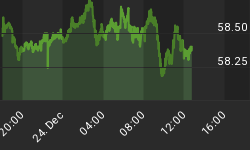In observing the current stock market rally, stocks leading the way are not the high quality companies with solid balance sheets and good prospects for growth but are the most beaten down troubled entities. We are confident that this is not an investors' rally but rather a traders rebound where much of the upside volume is due to short covering.
The banking sector has been the unquestionable leader in the rebound over the past six week. The sector has outperformed not only the S&P 500 but the NASDAQ 100 by a wide margin.

However, despite the reports that big banks are beating street estimates this earnings season, a closer look at earnings paints a rather dull picture.
For the most part, positive surprises are related to banks' trading activities and to the retroactive change in the application of the mark-to-market accounting rule. Most of the core businesses of these major banks remain in very poor shape.
And could it be any other way? The level of unemployment today is close to a 30-year high and will most likely reach 9.5%-10% by the end of the year. In California (the sixth largest economy in the world) the unemployment rate is already at 11.3%. In the past five months, United States lost an unprecedented 3 million jobs.


For the unemployment rate to stabilize, the economy would have to grow by 2.5% to 3.0%. In the fourth quarter of 2008, the economy fell by a 6.3% annual rate, while consensus forecast for the first quarter of 2009 now stands at a negative 5.0%. First quarter figures are due to be released on April 29th. In our opinion, a return to sustainable growth of 2.5% to 3.0% will not occur sooner than in two or as much as five years.
As a result of a sharp decline in the real estate market as well as the stock market, there has been a tremendous fall in household wealth over the past twelve months. This compares to no other time in the post-World War 2 period. Consumption is declining but rather slowly as people are dipping into their savings or raising their debt levels to try to avoid the inevitable decline in their standard of living. Consumer spending will continue to decline and may do so at an accelerated pace in the coming months as unemployment continues to increase.

It is hard to find a silver lining among all of these bad economic developments. In the corporate America, earnings have fallen off a cliff. Further declines are likely for another two to three quarters.

Falling earnings with little prospects for a quick recovery combined with rising stock prices are all characteristics of the bear market rally.
From a technical perspective, six weeks of rising stock prices have caused the S&P 500 to reach its first important resistance level of 875. For the short term, there are two most probable scenarios:

- Since the NASDAQ 100 and the S&P 500 are overbought and the momentum of the rally is fading, one likely outcome is profit taking the first support at the level of 50-day exponential moving average (EMA) at 815.
- If resistance at 875 is overcome in the next few days, a sharp short covering rally is possible which would result in a gain of 5% to 7% to the level of 950. We believe that such a rally would be a false breakout and create a good shorting opportunity.
The latest gold down-leg began in February has now lasted for two months. However, over the past four weeks the price of gold has declined without interruption. Five consecutive declining weeks for the metal is a pretty rare event - this has occurred only three times in the past eight years of this secular bull market (May 2004, June 2006 and August 2008).

In the first two instances, lows in the fifth week were also the lows for that year. Last year, despite a sharp September rebound following the five down-weeks ending in August, we saw the final low only in November. This anomaly is related to the total liquidation of assets by leveraged players during the late 2008 market crash.
The above lets us conclude that the coming week may retest this year's low (lower $800s), but whether this level is retested or not, a sharp rebound is likely as soon as next week (fifth) or the following (sixth) week. Of course, this assumes that nothing extraordinary occurs this time around.
This is an excerpt from a Resource Stock Guide Newsletter dated April 18, 2009.
















